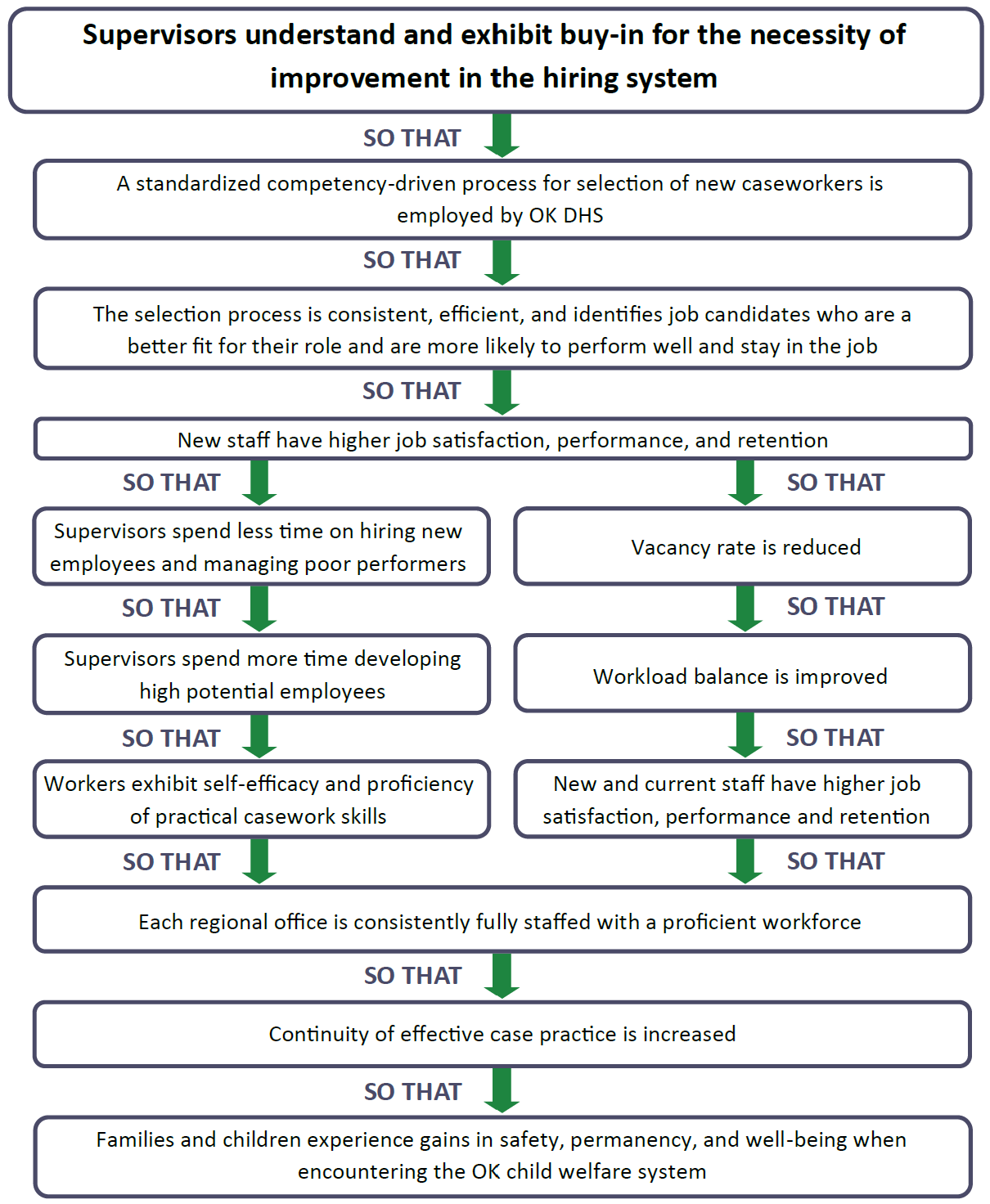Competency-based Personnel Selection
During the needs assessment process three areas of opportunity were discussed for possible intervention at the Oklahoma Human Services (OKDHS) Division of Child Welfare Services:
- hiring of new workers,
- promotion decisions for lead worker and supervisor positions, and
- staff recognition and rewards.
Ultimately, one theory of change was developed to step through the “if, then” logic for implementation of a standardized hiring process to improve worker retention and performance.
The theory of change development process was informed by various data examined throughout the needs assessment, input from the Oklahoma QIC-WD Steering Committee, and relevant research and best practice for hiring and selection. Overall, it was anticipated that by addressing inconsistencies in hiring practices and implementing a standardized, competency-based hiring process for new Child Welfare Specialists, new hires would be a better fit for the role, resulting in improved job satisfaction, self-efficacy, performance and retention for new hires. In turn, these outcomes were anticipated to improve organization-wide retention and performance. Additionally, a reduction in turnover for new staff was expected to lead to reduced office vacancy rates, a better balance of caseloads, and higher job satisfaction, performance and retention for teams in the experimental sites. Ultimately, these improvements were expected to improve continuity of case practice and safety, permanency, and well-being outcomes for children and families.
The following image depicts the theory of change beginning with a problem statement followed by a series of steps that lay out the logic on how that problem will be addressed.